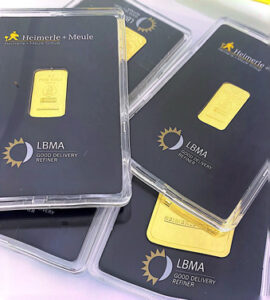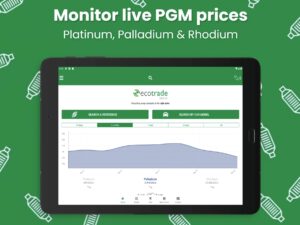Exploring Precious Metals: Techniques, Challenges, and Opportunities
The exploration of precious metals is a complex and challenging process that requires advanced techniques and expertise. Precious metals such as gold, silver, platinum, palladium, iridium, ruthenium and rhodium are highly valued for their rarity, beauty, and various industrial applications. These metals are found in rocks and minerals in various parts of the world, and the exploration process involves identifying mineral deposits and evaluating their potential for economic viability. In this article, we will discuss various techniques used in the exploration of precious metals, the challenges involved, and the opportunities for investors and mining companies.
Techniques Used in Exploration:
Exploration techniques for precious metals involve the use of geology, geochemistry, and geophysics. These techniques are used to identify potential areas for mineral deposits, and to evaluate their quality and quantity. The following are some of the techniques used in the exploration of precious metals:
Geology:
Geology is the study of the Earth’s structure, rocks, and minerals. Geologists use their knowledge to identify potential areas for mineral deposits. They look for geological features that suggest the presence of precious metals, such as faults, folds, and intrusions. Geologists also use a range of tools such as aerial photography, satellite imagery, and ground-based surveys to identify areas with high potential for mineral deposits. Once a potential area has been identified, geologists use drilling and sampling techniques to collect rock and soil samples for analysis.
Geochemistry:
Geochemistry is the study of the chemical composition of rocks, minerals, and soils. Geochemists analyze samples to determine the concentration of precious metals and other minerals present in the area. They use a range of techniques such as atomic absorption spectrometry, X-ray fluorescence, and inductively coupled plasma-mass spectrometry to analyze samples. The results of these analyses help geologists to identify the mineral composition of the area, and to determine the potential for economic viability.
Geophysics:
Geophysics is the study of the Earth’s physical properties, such as gravity, magnetism, and electrical conductivity. Geophysicists use these properties to create maps of the subsurface, which can help identify potential mineral deposits. They use a range of techniques such as magnetic surveys, gravity surveys, and electromagnetic surveys to map the subsurface. These maps provide geologists with valuable information about the geological structure of the area, which can help them to identify areas with high potential for mineral deposits.
Challenges in Exploration:
Exploration of precious metals is a high-risk venture that involves significant capital investments. The following are some of the challenges faced by mining companies in the exploration process:
Access to Land:
Exploration of precious metals often requires access to land that may be owned by governments or private entities. Obtaining access to land can be a complex and time-consuming process, which can delay exploration activities and increase costs. Governments often impose strict regulations on mining activities, which can also increase the costs of exploration.
Technical Challenges:
The exploration process requires advanced techniques and expertise, which may not be available in some areas. Mining companies need to invest in research and development to develop new exploration techniques and improve existing ones. The lack of technical expertise and equipment can also increase the costs of exploration.
Environmental Concerns:
Exploration activities can have a significant impact on the environment, and mining companies are required to comply with strict environmental regulations. These regulations can increase the costs of exploration and delay the exploration process. Mining companies need to invest in environmental management systems and technologies to minimize the impact of exploration activities on the environment.
Opportunities for Investors and Mining Companies:
Exploration of precious metals presents significant opportunities for investors and mining companies. The following are some of the opportunities available:
Discovery of New Deposits:
Exploration activities can lead to the discovery of new mineral deposits, which can be a significant source of revenue for mining companies. The discovery of a new deposit can also increase the value of mining companies’ stocks and attract new investors.
Expansion of Existing Deposits:
Exploration activities can also lead to the expansion of existing mineral deposits. By identifying new areas of mineralization, mining companies can increase the size and value of their deposits, which can lead to increased production and revenue.
Diversification of Mineral Portfolio:
Exploration activities can also lead to the diversification of mining companies’ mineral portfolios. By exploring for different types of minerals, mining companies can reduce their dependence on a single commodity and reduce their risk exposure.
Investment Opportunities:
Exploration of precious metals presents significant investment opportunities for individual and institutional investors. Investors can invest in mining companies that are engaged in exploration activities and benefit from the potential increase in the value of their stocks.
Here are some numbers:
In 2020 precious metals ore was traded in the total of $10.1Bn which represents a 30% growth from $7.72Bn in 2019. The top exporters of precious metals ore in 2020 were Australia ($1.15Bn), South Africa ($1.0Bn), Russia ($0.8Bn), Bulgaria ($0.7Bn) & Kazakhstan ($0.7Bn).
The top importers of precious metals ore in 2020 were China ($3.0Bn) ,Germany ($2.7Bn), South Korea ($0.7Bn), and Japan ($0.5Bn).
Conclusion:
The exploration of precious metals is a complex and challenging process that requires advanced techniques and expertise. Geology, geochemistry, and geophysics are some of the techniques used in the exploration process. The exploration process is also fraught with challenges such as access to land, technical challenges, and environmental concerns. However, the exploration of precious metals presents significant opportunities for mining companies and investors, such as the discovery of new deposits, the expansion of existing deposits, diversification of mineral portfolios, and investment opportunities.
As the demand for precious metals continues to increase, the exploration process will play a crucial role in meeting this demand. Mining companies that invest in exploration activities and develop new techniques will be better positioned to take advantage of the opportunities presented by the exploration of precious metals. Investors who understand the risks and opportunities of the exploration process can also benefit from the potential increase in the value of their investments.







